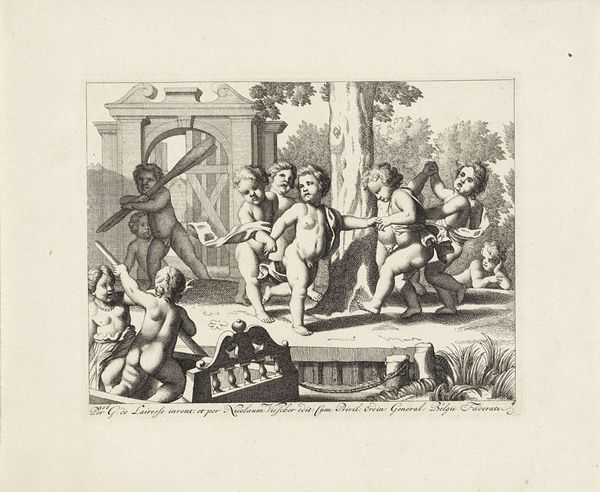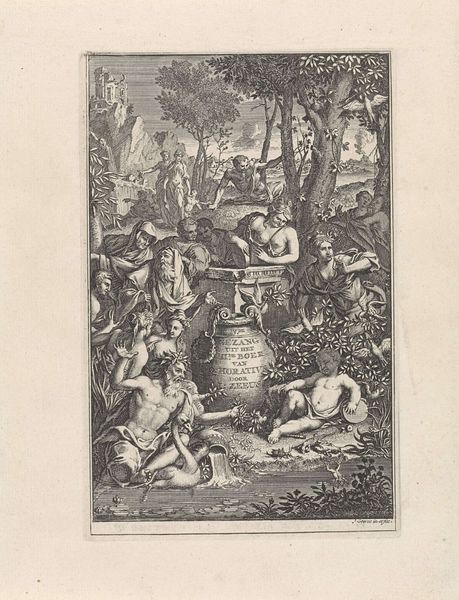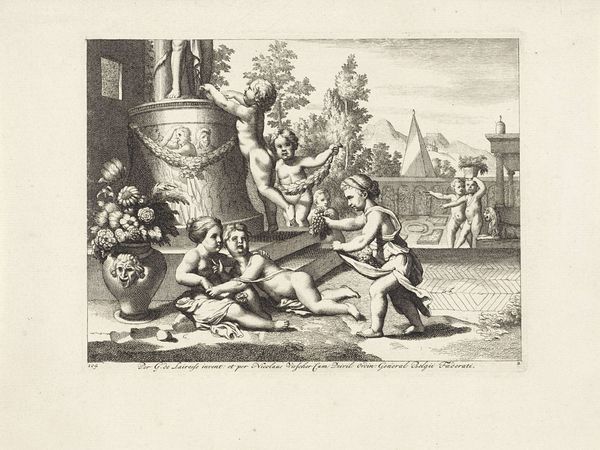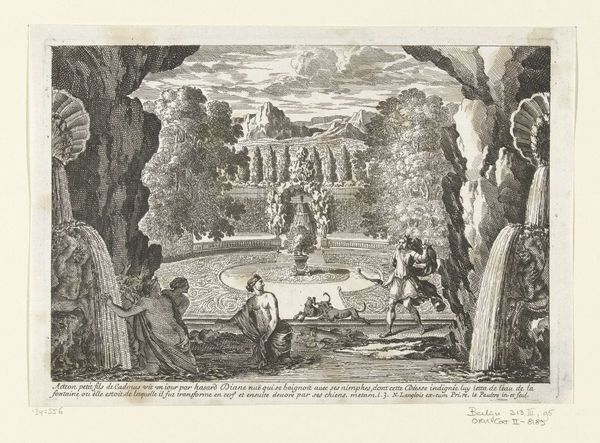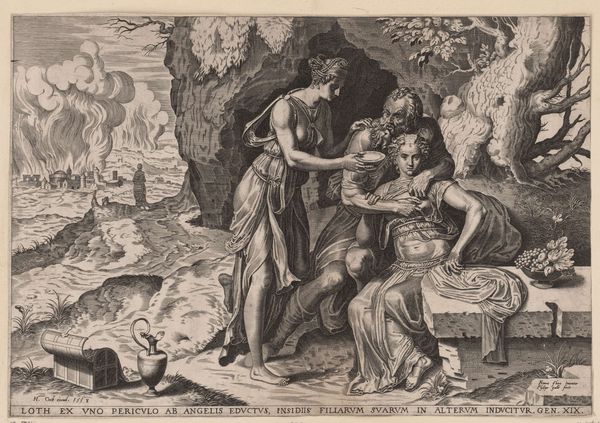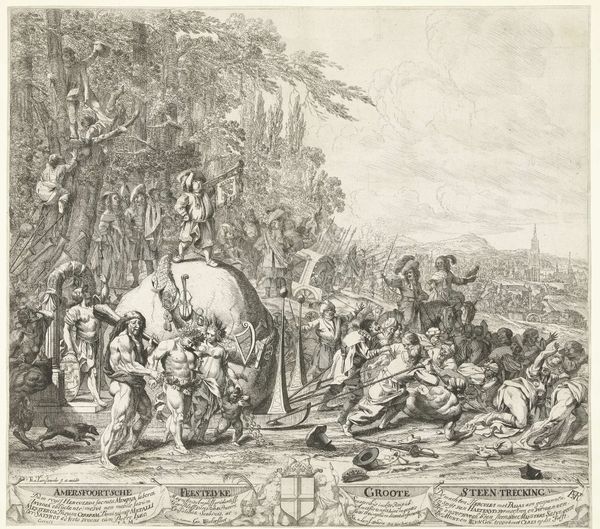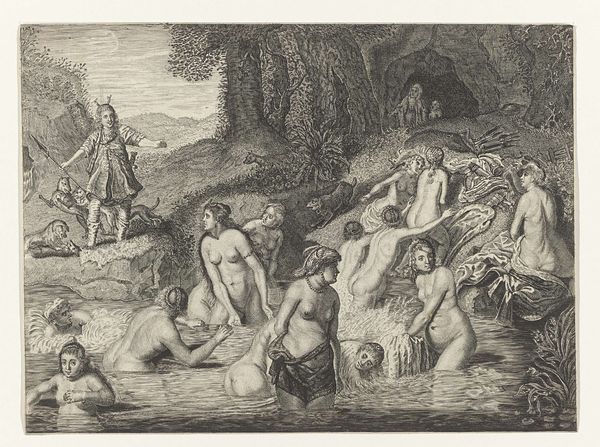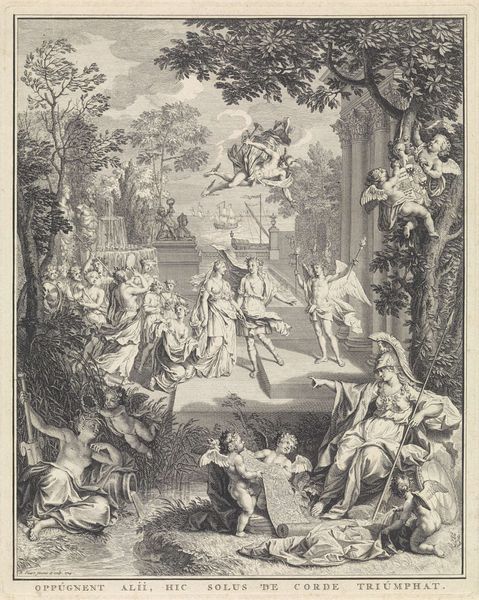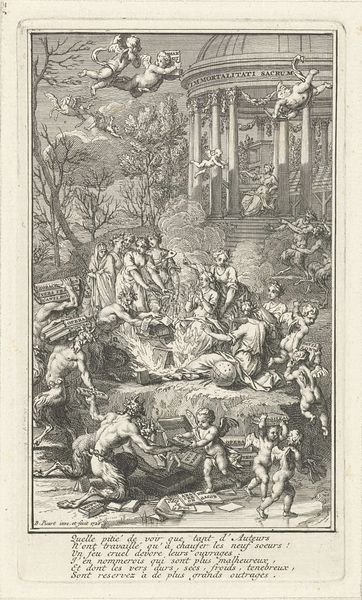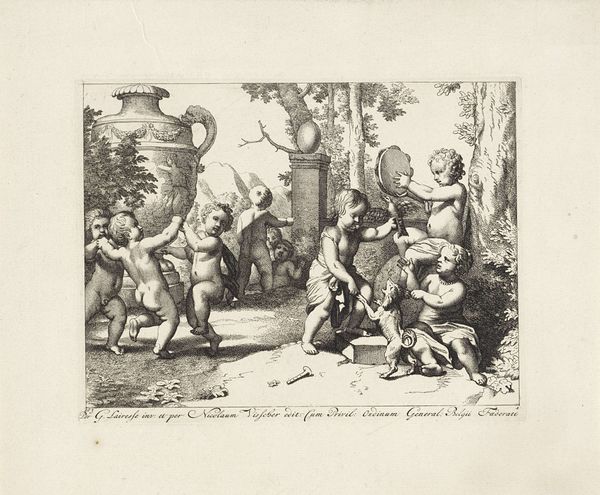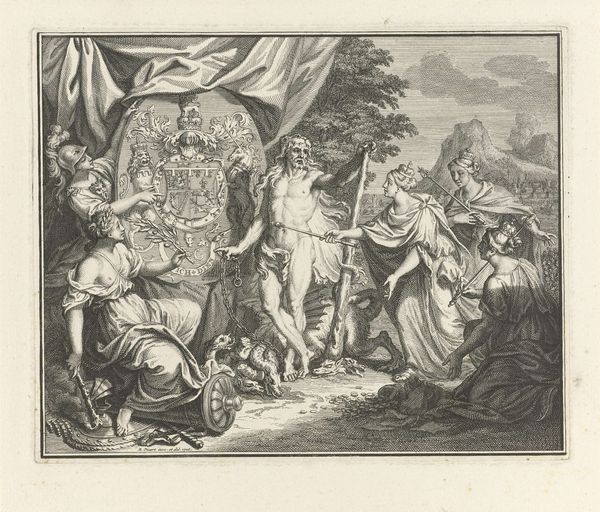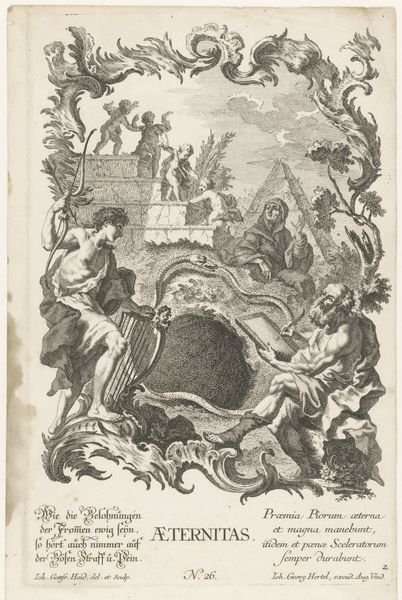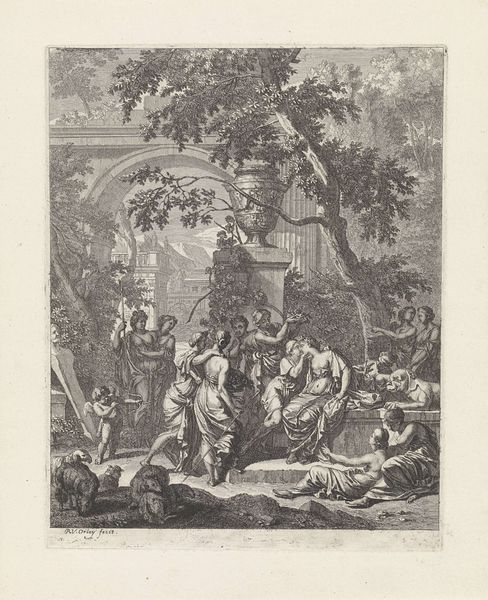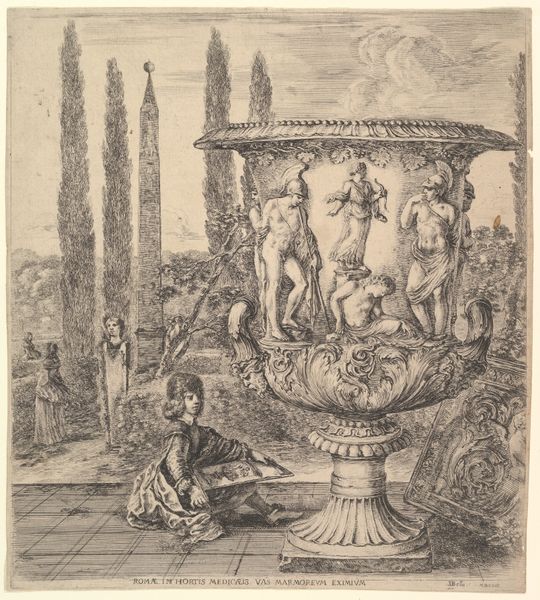
print, etching
#
allegory
# print
#
etching
#
landscape
#
classical-realism
#
figuration
#
classicism
#
ancient-mediterranean
#
history-painting
Dimensions: height 178 mm, width 270 mm
Copyright: Rijks Museum: Open Domain
Curator: At first glance, it's an odd sensation, like peering into someone’s idealized dream of a powerful landscape. There’s a formality to the composition that’s both imposing and slightly… detached? Editor: Let's delve into this curious vision. We’re looking at a print, specifically an etching entitled "Titelblad: Nova Fontium Delineatio" currently residing in the Rijksmuseum. It’s attributed to an anonymous artist before 1800. Curator: An anonymous master! And it reads almost like a stage set doesn't it? These muscular river gods flanking what seems to be a massive, possibly allegorical, fountain... like they're presenting it to us. It’s…assertive. Editor: Indeed. River gods, allegorical figures, landscapes. The print is steeped in classicism and alludes to ancient themes, showcasing a history painting vibe. Notice how water serves as a potent symbol throughout the work? Fountains suggest life, purification, perhaps even the flow of time itself. Curator: I feel it's beyond mere allegory. This image feels intentionally theatrical, almost instructional in its clarity of classical elements and its arrangement of mythological beings. Every ripple in the cascading water and musculature of the figures points to power and purposeful design. It's a visual display of dominance over nature, meticulously captured in print. Editor: An excellent observation. But does the precision amplify its symbolic weight, or conversely, flatten the emotional landscape, confining feeling behind the hard lines? I see figures and landscapes distilled down to emblems. Does it perhaps sanitize primal experience and reframe it as curated spectacle? Curator: Maybe both simultaneously? The theatrical staging you picked up is hard to dismiss. This might represent the 18th-century ambition to control nature and understanding through design, reflecting those ideals. We impose order, even on primal chaos and emotions, using art as our manual. Editor: Right, the piece then encapsulates this desire to order, clarify, even perhaps commodify experience, packaging powerful mythologies in neat delineations. Food for thought… Curator: Precisely! Perhaps, revisiting this "Titelblad" can serve as a reflection on our continuous attempts to shape and label both art and world, acknowledging that sometimes the strongest images challenge our fixed perceptions and demand our continuous viewing. Editor: Beautifully said.
Comments
No comments
Be the first to comment and join the conversation on the ultimate creative platform.
